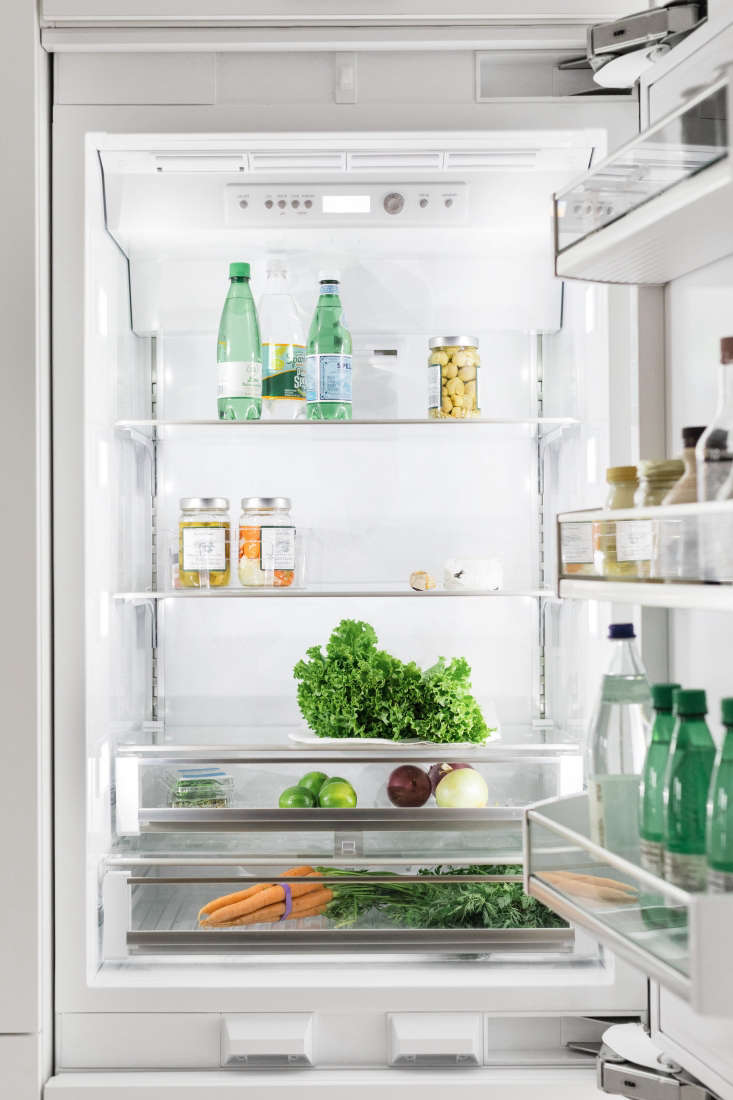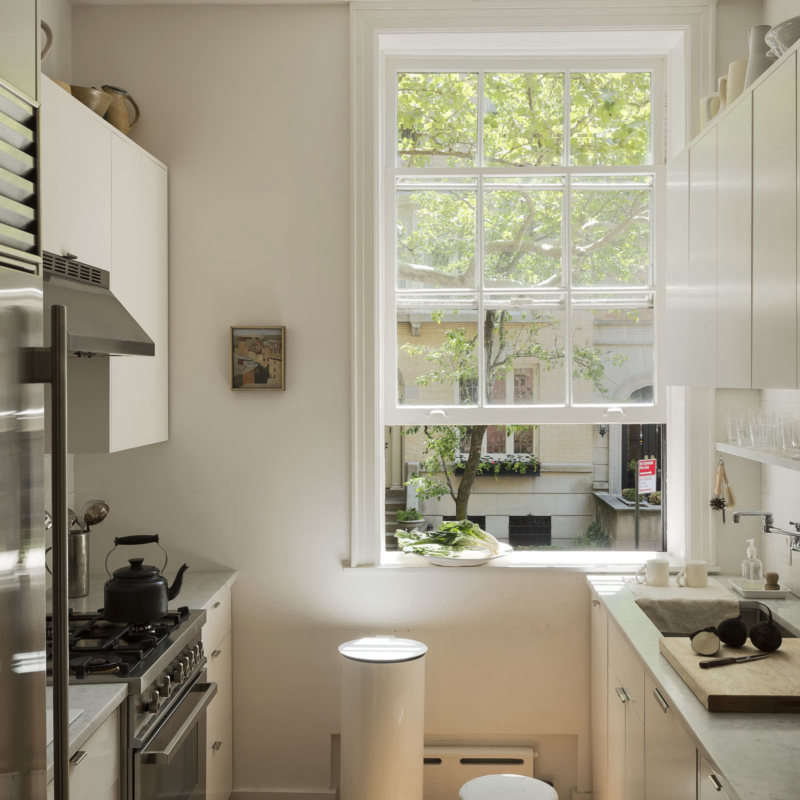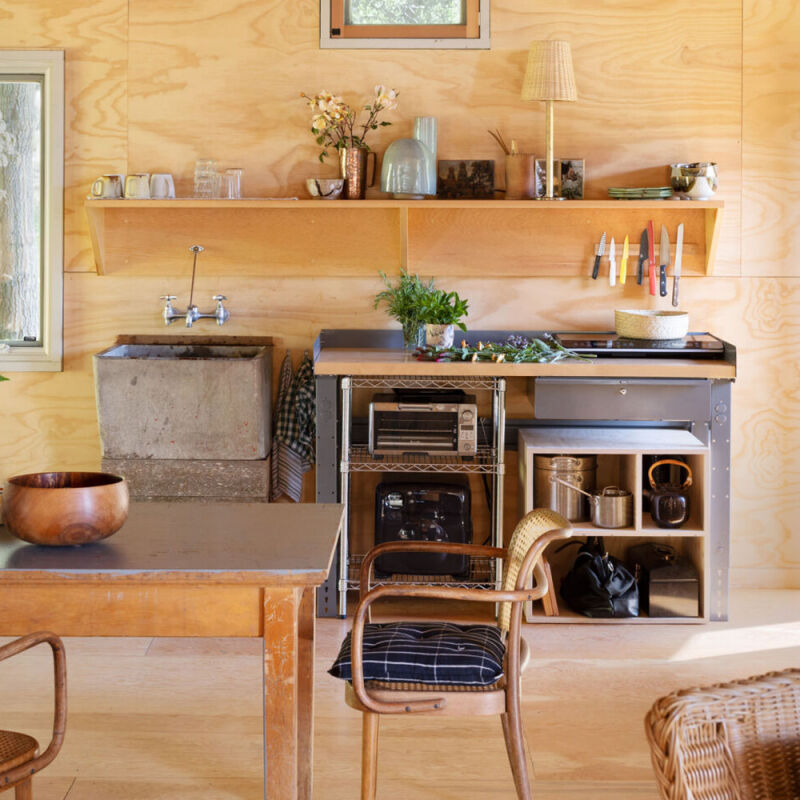This content was produced as advertising by Remodelista in collaboration with Bosch Home Appliances.
For most people, especially those who love to cook, the most exciting part of a kitchen remodel isn’t picking the cabinets or countertop—it’s the chance to buy state-of-the-art, new appliances. To make sure you’re happy with your choices, there are a few rules to follow and lots of things to consider, such as: How often do you like to cook? How many people do you cook for? And what appliances will work best with the style of your kitchen?
To get some advice, we partnered with Bosch Home Appliances and learned some invaluable tips from Juanita Galliford, Bosch kitchen design specialist. Read on for this kitchen expert’s general guidance, plus advice on choosing individual appliances.
Photography by Joyelle West for Remodelista.
General Tips

When choosing appliances, Galliford says, “Don’t be tempted by gimmicks; go for well-established brands.” Impulse buys aren’t smart when it comes to appliances you’ll be using heavily for some time to come. Before you even approach a showroom, you should already have a design plan, a budget, and a list of the features you’re looking for, such as energy efficiency or a good warranty. Start by doing your homework online to see what’s out there.
Design Advice

The most important design tip we learned from Galliford is this: measure, measure, measure. That doesn’t just mean scoping out the space in your kitchen. You also have to be certain that the appliances you’re purchasing will fit in your doorways, hallways, and stairs for delivery. If there’s any doubt, sketch the layout of your space with all dimensions and bring it with you to the showroom.
What’s the style of your kitchen? Appliances that have a sleek, minimal look are more easily integrated into most styles (contemporary and traditional included). Flush installation—that is, appliances that are the same depth as the cabinetry—gives you clean lines. So does the ability to add custom panels to your appliances, which allows them to blend into the cabinetry. (See more on that below.)
A spacious kitchen allows you to choose larger appliances. But if your space is limited, the good news is that today’s compact appliances work harder than ever—manufacturers like Bosch have figured out how to pack lots of capacity into small interiors, without sacrificing on features or aesthetics.
Refrigerators

Besides size, the main choice when it comes to your fridge will be: top-mounted freezer, bottom freezer, or French doors (with the freezer on one side). Having the freezer on the bottom is convenient because it puts the main compartment at eye level—so there’s less bending over to retrieve items. A fridge with French doors gives you a column freezer, making it easy to find your frozen items.
Be aware that a wider fridge also comes with a wider door—make sure it won’t block kitchen traffic when it’s open. When the space in front of the fridge is tight, perhaps because of an island, a fridge with French doors (that is, narrower side-by-side doors) can be a better bet.
Dishwashers

Today’s dishwashers are far superior to older models: They’re quieter, easier to load, and more water-efficient. If you only have room for an 18-inch model, you’ll find that small interior roomier than you’d expect.
Look for a dishwasher with a sturdy, well-designed interior. Flexible space—such as adjustable racks—can be useful if your loads range from, say, wine glasses to platters and pasta pots. Bosch also recently introduced a new third rack that’s deep enough to fit cereal bowls, freeing up space in the bottom racks.
The position of the controls is another variable: In some models they’re located on the front of the door, in others they’re on top of the door—so they’re hidden when the door is closed, for a sleek look.
Regarding sound levels: If you plan to use the delayed-start function and run the load at night while you’re sleeping, it’s especially important to select a dishwasher that’s whisper-quiet.
Panel-Ready Appliances

Panel-ready refrigerators and dishwashers are a great way to coordinate and customize your kitchen. Not all appliances have this feature, so you’ll need to choose carefully if it’s a look you want.
When you order a panel-ready model, it comes with an unfinished front to be covered with a separate panel. Many manufacturers offer panels in a range of colors, ready to attach to their panel-ready models. But if you’re going for an integrated look, see if your cabinet manufacturer can provide panels to match those on your cabinets. The result is a seamless, high-end look in which the appliances are almost hidden from sight.
The appliance manufacturer’s website will provide specs for your appliance’s panels (you’ll need two for a two-door fridge, for example). The panels must be light enough to avoid causing extra wear and tear on the door, and thin enough to allow clearance on the sides.
Generally, your contractor or cabinet installer will be the one installing the panels on the appliances. (The panel must be attached before the appliance is installed.) It’s important to engage a professional, says Galliford, because installation can be tricky. The manufacturer will supply full installation instructions along with the necessary mounting hardware; you’ll need to supply the matching handles.
“Panel-ready appliances cost a bit extra,” says Galliford, “but it can be worth it to have everything streamlined, especially in a small space.”
Stay tuned for more tips coming next week. For more information on the appliances shown here, visit Bosch Home Appliances.
Frequently asked questions
What are the benefits of a built-in oven?
A built-in oven provides a sleek and integrated look in your kitchen. Additionally, they offer more cooking space and are usually more powerful.
What is convection cooking?
Convection cooking is a method of cooking that uses a fan to circulate hot air throughout the oven. This results in faster and more even cooking.
What is induction cooking?
Induction cooking uses electromagnetic technology to heat up the cookware directly, rather than the surface of the cooktop. It is faster and more precise than gas or electric cooking and is also more energy-efficient.
What is the difference between a gas and an electric cooktop?
Gas cooktops offer more precise temperature control and are better suited for cooking with high heat. Electric cooktops are easier to clean and are more affordable than gas cooktops. They also offer more flexible installation options.
What is the benefit of a range hood?
A range hood removes smoke, steam, and odors from your kitchen while you cook. This improves air quality and can prevent the build-up of grease and other contaminants on your kitchen surfaces.






